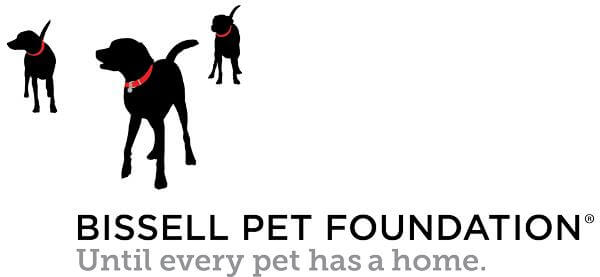Every moment, your dog battles invisible enemies called free radicals. These unstable molecules damage cells and DNA, accelerating aging and increasing risks of disease. Antioxidants act like microscopic superheroes, neutralizing free radicals before they wreak havoc. Without a strong antioxidant defense, your dog’s body struggles to repair itself, leading to inflammation, weakened immunity, and chronic illness. This battle happens daily, especially with exposure to pollution, intense exercise, and even sunlight. Understanding antioxidant status in dogs reveals how well their bodies fight oxidative stress and maintain vitality.
The Science Behind Antioxidant Status in Dogs
Antioxidant status measures the balance between harmful oxidants and protective antioxidants in your dog’s system. Key antioxidants include vitamins E and C, lipoic acid, glutathione peroxidase, and polyphenols. Research shows dogs with better antioxidant status exhibit less DNA damage and improved immune function. For example, studies found that diets enriched with vitamin E, vitamin C, and β-carotene significantly boost antioxidant levels and reduce oxidative damage in dogs. Dogs suffering from heart diseases show altered antioxidant profiles, highlighting the importance of maintaining strong antioxidant defenses to slow disease progression.
Measuring Antioxidant Status
Antioxidant status in pet dogs is commonly measured by assessing the total antioxidant status (TAS) in serum or plasma. The most widely used method for this is the 2,2′-azinobis (3-ethylbenzthiazolin-6-sulfonic acid) (ABTS) assay, which quantifies the overall antioxidant capacity by measuring the ability of antioxidants in the sample to neutralize the ABTS radical.
Key points about measuring antioxidant status in dogs include:
- Total Antioxidant Status (TAS): This assay provides a summary measure of the combined antioxidant capacity of all antioxidants present in the serum or plasma. It is useful for evaluating oxidative stress and antioxidant impairment in various canine diseases and conditions.
- Reference Intervals: Recent studies have established reference intervals for serum TAS in a large and diverse population of dogs, with values typically ranging from about 1.41 to 2.27 mmol/L. These reference intervals help interpret TAS results in clinical settings.
- Additional Antioxidant Parameters: Besides TAS, specific antioxidant enzymes such as superoxide dismutase (SOD) and glutathione peroxidase (GPX) are also measured spectrophotometrically to assess antioxidant enzyme activity. These enzymes play critical roles in the enzymatic defense against oxidative damage.
- Lipid Peroxidation Markers: To assess oxidative damage, lipid peroxidation products like malondialdehyde (MDA) and 8-2alpha isoprostane are measured alongside antioxidant parameters to provide a more comprehensive picture of oxidative stress.
- Clinical Utility: TAS and related antioxidant measurements have been applied in research and clinical investigations of canine diseases such as heart failure, inflammatory conditions, infectious diseases, and during anesthesia or surgery.
Nourishing Antioxidant Defenses Naturally
Feeding antioxidant-rich foods offers a practical way to strengthen your dog’s antioxidant status. Vibrantly colored fruits and vegetables such as blueberries and carrots provide powerful antioxidants like beta-carotene, lutein, and polyphenols. These nutrients support eye health, joint comfort, and heart function. For example, vitamin E and C reduce joint inflammation and promote collagen formation, essential for cartilage. Including natural sources like pumpkin, broccoli, and fish oils in daily meals fuels your dog’s internal defense system without relying solely on supplements. Ensure your are not overfeeding the mentioned items to your dog.
It’s also important to note that before introducing any dietary modification to your furriend, you consult with your veterinarian.The veterinarian can assess the individual condition of your dog and recommend appropriate quantities.
Holistic Treatments and Lifestyle Tips to Boost Antioxidant Status
Beyond diet, holistic approaches enhance antioxidant defenses and overall well-being:
- Regular Moderate Exercise: Encourages natural antioxidant enzyme production without overwhelming oxidative stress.
- Stress Reduction: Calm environments and mental stimulation prevent chronic stress, which depletes antioxidants.
- Avoid Toxins: Limit exposure to cigarette smoke, harsh chemicals, and polluted environments that increase free radical formation.
- Supplement Wisely: When necessary, supplements with lipoic acid, vitamin E, and vitamin C improve antioxidant capacity and protect DNA integrity, especially in aging dogs.
- Hydration and Quality Sleep: Support cellular repair and antioxidant recycling.
Maintaining optimal antioxidant status empowers your dog to fight disease, age gracefully, and sustain energy. Antioxidants protect vital organs, preserve DNA, and reduce inflammation, creating a foundation for longevity. Embracing antioxidant-rich nutrition and holistic care is akin to gifting your dog a life filled with vitality and resilience.
Post Views: 62
Animal Wellness is North America’s top natural health and lifestyle magazine for dogs and cats, with a readership of over one million every year. AW features articles by some of the most renowned experts in the pet industry, with topics ranging from diet and health related issues, to articles on training, fitness and emotional well being.
Source: Animal Wellness Magazine












